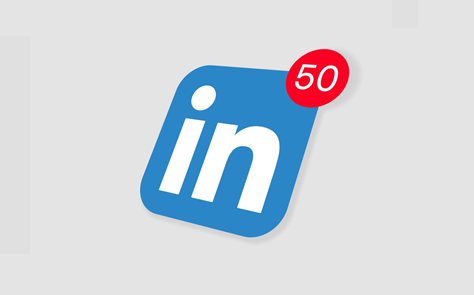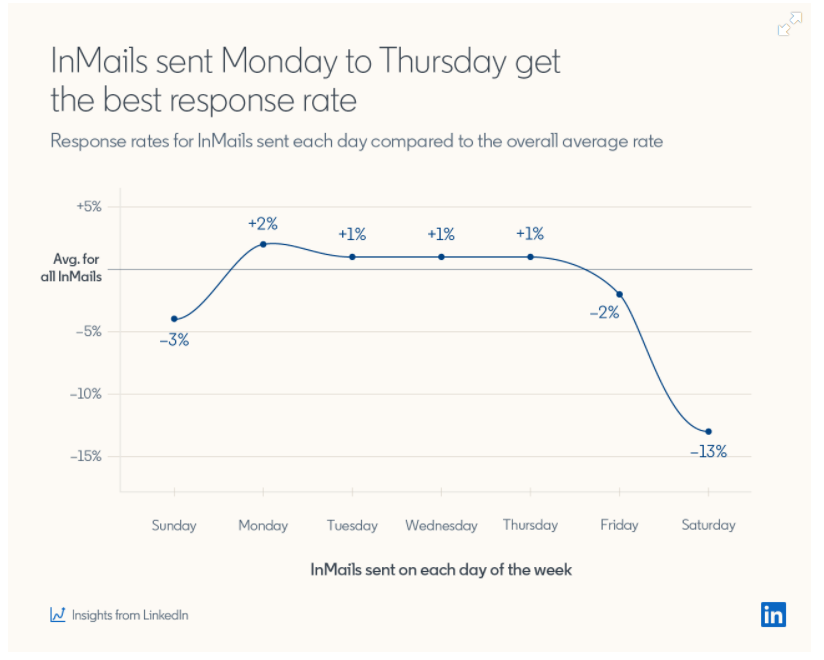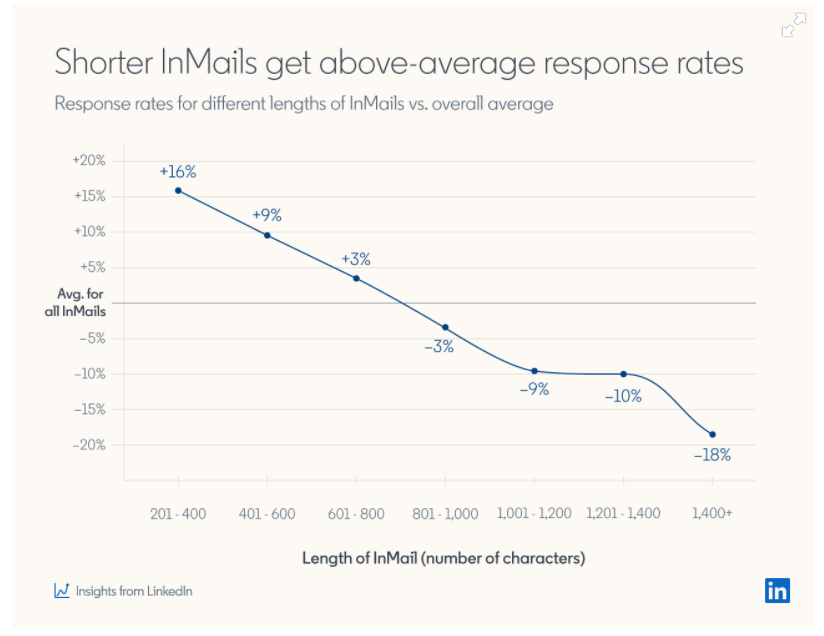
Have you ever wondered when the perfect time would be to send a Recruiter inmail to a potential candidate? Well, fortunately for you LinkedIn recently published a (research study) based on sending Recruiter Inmails within their platform. The team at LinkedIn wanted to answer several questions with this data report:
- Do longer or shorter InMails tend to get better response rates?
- Does it matter what day of the week you send an InMail?
- Are personalized InMails more likely to get a response?
- Are “Open to Work” candidates more likely to respond?
What is InMail?
LinkedIn Recruiter InMail makes it possible for LinkedIn members to send direct messages to people you’d like to connect to, whereas standard LinkedIn messages are only possible among direct connections.
In addition to InMail offering more opportunities to connect with candidates, recruiters also become eligible to earn credits based on responses. Knowing when to send an InMail is important, but there are a few other key factors that can also improve response rates.
When Should You Send InMail Messages?
Research provides a few basic guidelines as to when you should send InMail messages, but ultimately it will depend on your targeted audience. Overall, you’ll get most responses within the first twenty-four-hour period. This is likely due to the fact that motivated candidates are always looking for opportunities.
According to LinkedIn statistics, if a single day could be ruled out as one to avoid sending messages on, it would be Saturday. While InMails sent on Saturdays usually receive a response, it is delayed by 13% compared to weekdays. The reasoning is likely due to candidates reserving Saturdays for personal time, which isn’t a bad idea for recruiters to do either.
As for the most ideal time for sending InMail messages, Mondays rank the highest for most rapid responses, followed by subsequent weekdays through Thursday, which are only slightly lower by a mere 1-2%.
Other factors that affect response rates include message length, style, and target audience, so let’s take a closer look at each.

InMail Length Matters
In this technological-based world we live in, the average attention span is gradually decreasing. As of 2021, it is estimated that individuals 24 years old and younger, known as Gen Z have an 8-second attention span while Millennials, ages 25-40 can focus for an average of 11-seconds. With that being said, InMails that are short and concise, consisting of 400 characters or less, receive responses up to 41% more than longer messages.
This isn’t to say that longer messages don’t do well, and depending on both the correspondence and your targeted talent pool, an extremely brief message simply isn’t helpful.
The fact is, currently only 10% of InMail messages fall into the extra short category, but that “to-the-point” approach is effective especially for the passive and/or extremely busy candidates.

Personalized Correspondence Performs Best
Recruiters are well aware of the impact personalized correspondence makes in comparison to those sent in bulk or derived from a template. LinkedIn “Insights” statistics indicate that tailored InMails perform 20% better than the rest.
Take the time to write a message that addresses key points about the recipient. This helps you communicate what sets them apart from all other candidates and this level of personalization lets them know you took the time to review their profile. Connecting on this level initially can lay a strong foundation when trying to hire top talent.
Reach Out to the “Open to Work” Candidates
While focusing on your target audience is always recommended, reaching out to those tagged as “Open to Work” can pay off too! Regardless if these candidates are actively looking for a career change or are currently unemployed, don’t miss out on this potential talent-match.
LinkedIn data reveals that Open to Work InMail response ranks 75% higher than others. Keep in mind that many people have been affected professionally by the pandemic, so the negative stigma associated with being unemployed should really be disregarded during these times.
Finally, these guidelines are meant to provide a good starting point for tweaking your strategies and increasing InMail response rates. Implement a few A/B tests to see how your focused audience best responds, and go from there.
Recommended Reading:
CodersRank – A Developer Search Platform
Best Time to Send a Recruiter Email or Message?
Top Tools to Scrape LinkedIn Profiles
- AI Search Will Transform Talent Sourcing Forever - January 10, 2025
- Build an AI Sourcing Assistant using ChatGPT 4 - January 10, 2025
- Top Recruiting Leaders to Follow in 2025 - January 8, 2025

1 Comment on “When’s the Best Time to Send a LinkedIn Recruiter InMail?”